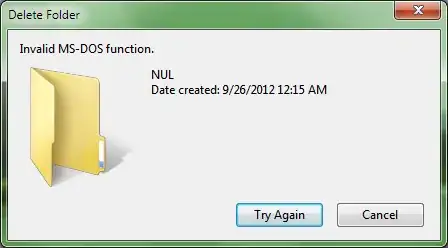I gave this answer to a duplicate, and thought I'd post it here for your reference:
As previously stated. It's a reserved word from back in MS-DOS, for the CONsole device (as far as I can remember). But, you can force Windows/dos to create the folder for you. For devices, it uses the format \\.\[RESERVED_WORD] to access the "file" (these devices used files for communication). To force Windows to create your folder, instead of doing mkdir [RESERVED_WORD], do the following:
mkdir \\.\[absolute path to folder of choice, including drive letter]\[RESERVED_WORD]
For example, to create CON folder on my desktop,
mkdir \\.\C:\Users\me\Desktop\CON
To delete the folder, you have to reference it the same way, or else it won't work.
rmdir \\.\C:\Users\me\Desktop\CON
My advice though is to just use a different name. It would be very difficult to always refer to it via its absolute path, especially if you are developing an app you plan on deploying.

